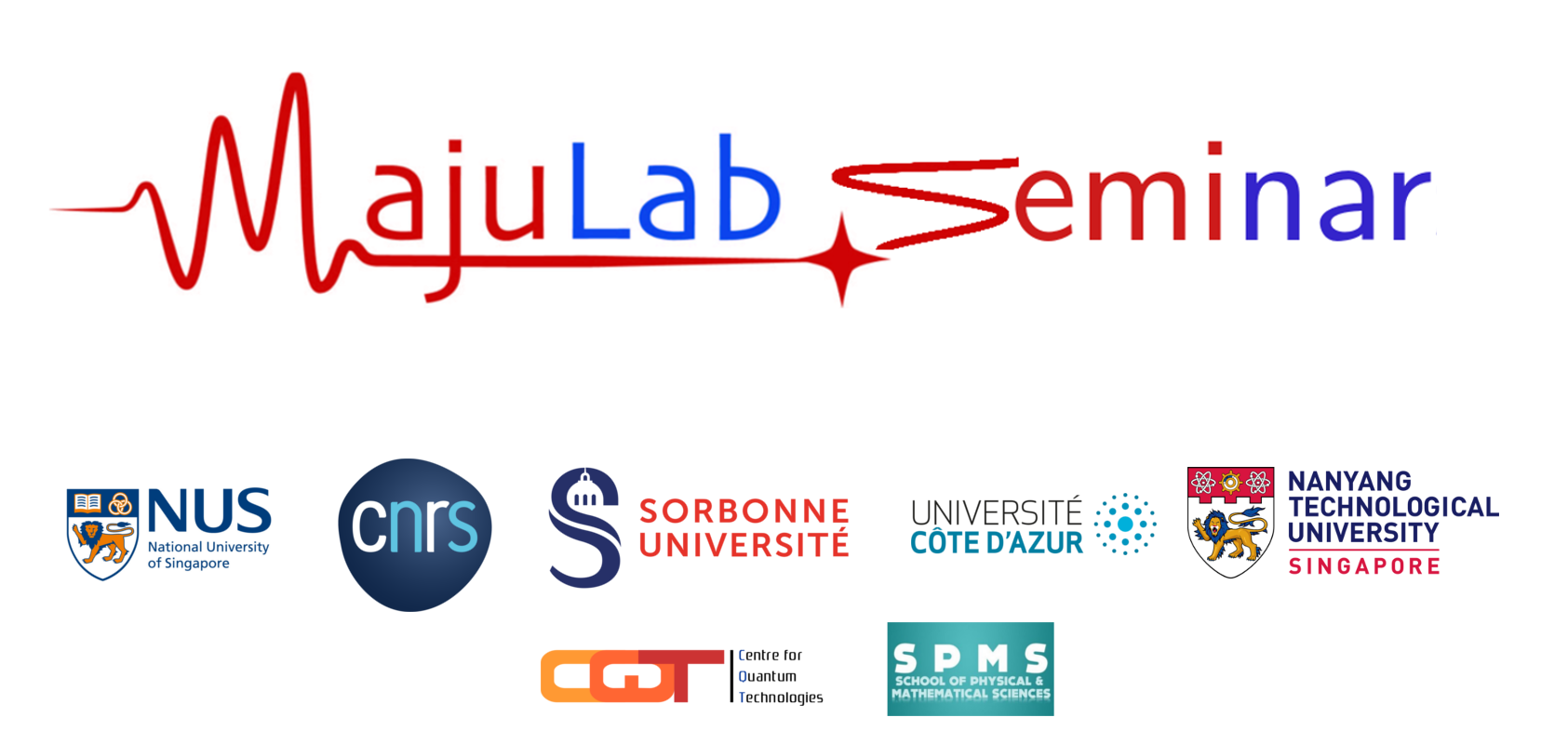Majulab Seminar – 5 February: Non-Gaussian quantum states of a multimode light field

Majulab Seminar – 5 February
Friday 5 February, 4:30PM (SG Time) / 9h30 (FR Time).
Nicolas Treps – Non-Gaussian quantum states of a multimode light field
Please note that photographs and videos may be taken during the event for news and publicity purposes.

Nicolas Treps is a professor at Sorbonne Universite in Paris, France, in charge of the multimode quantum optics group at Laboratoire Katsler Brossel and co-director of the Quantum Information Center Sorbonne. His research is currently centered on quantum metrology and quantum information with optical frequency combs. Focusing on the continuous variable regime, he develops novel approaches to measurement based quantum computing and parameter estimation. He also applied these concepts to classical application, such as the study of ultrafast laser dynamics and spatial multiplexing. This lead to the co-foundation of Cailabs Start-up Company, that develops a complete imaging system with applications to spatial multiplexing in optical fibre.
Light offers a vast potential in the development of modern quantum technologies due to its intrinsic resilience to decoherence effects. One avenue for employing light to process quantum information focuses on the continuous variable regime, where the observables of interest are the quadratures of the electric field. They have proven their worth as a platform for creating huge entangled states (entangling up to one million optical modes). Additionally, this entanglement can be created in a deterministic fashion and easily manipulated with standard techniques in optics.
To reach a quantum advantage, and perform a task that cannot be efficiently simulated with a classical device, we require more than just entanglement. The additional ingredient is non-Gaussian statistics in the outcomes of the quadrature measurements. More specifically, we must create quantum states with a negative Wigner function. In quantum optics, the subtraction (or addition) of a photon from a squeezed state is a common method to generate such Wigner-negativity [1]. But this process has to be made mode-dependent with a multimode environment to prove useful for quantum information. For instance, it was shown that photon subtraction in one mode induces non-Gaussian properties in the modes that are correlated to it [2].
In this seminar, we will review the general concepts of continuous variable approach to quantum optics. We will then study what are the conditions under which photon subtraction in one mode create Wigner-negativity in a correlated mode [3]. Then, we generate a multimode Gaussian state from time/frequency modes of an optical frequency comb. Non-Gaussian quantum states, and Wigner negativity, are demonstrated removing a single photon in a mode-selective manner from the multimode environment [4]. We explore the interplay between non-Gaussianity and quantum entanglement and demonstrate large-scale non-Gaussianity with great flexibility along with an ensured compatibility with quantum information protocols.
[1] J. Wenger, et al. Phys. Rev. Lett. 92, 153601 (2004); V. Parigi, et al. Science 317, 1890 (2007).
[2] M. Walschaers, et al. Phys Rev Lett 121, 220501 (2018).
[3] M. Walschaers, et al., PRX Quantum 1, 020305 (2020).
[4] Y.-S. Ra et al, Nature Physics 11, 1 (2019).
